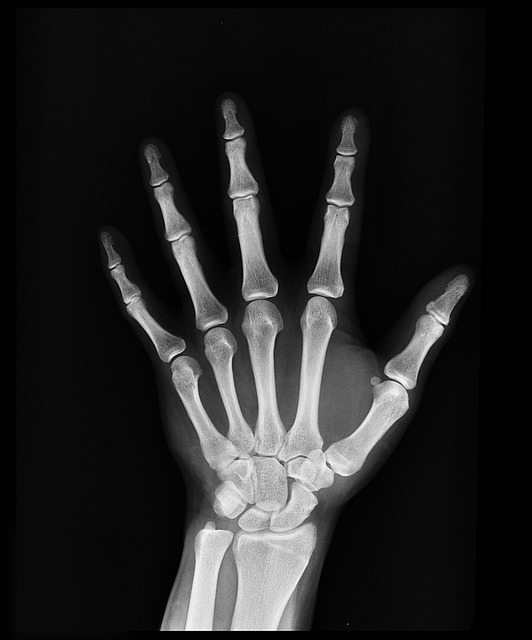Osteoporosis is not just a disease of the elderly - early prevention is important
Osteoporosis often develops silently and is not noticed until a fracture occurs. Watch for these common but easily ignored signs: fractures after a minor fall, long-term back pain and discomfort, hunched back or gradual changes in posture. Early action can help you maintain bone mass and strength, reduce the likelihood of future fractures, and improve long-term quality of life.

What exactly is osteoporosis and how does it affect the spine?
Osteoporosis is a condition characterized by decreased bone density and deterioration of bone tissue, leading to increased fragility and susceptibility to fractures. The spine is particularly vulnerable because vertebrae contain significant amounts of trabecular bone—a spongy, honeycomb-like structure that weakens faster than other bone types. When affected by osteoporosis, vertebrae can compress or collapse under even minimal pressure, resulting in spinal fractures. These fractures often occur in the thoracic (middle) and lumbar (lower) regions of the spine, causing acute pain, height loss, and the characteristic “dowager’s hump” or forward curvature of the upper back. Unlike broken arms or legs, spinal fractures may happen without obvious trauma, making them particularly insidious and often undiagnosed until multiple fractures have occurred.
What are the warning signs of spinal osteoporosis before fractures occur?
Detecting osteoporosis before fractures occur is challenging due to its asymptomatic nature, but certain warning signs may indicate developing bone loss. Gradual height loss (more than one inch over time) often signals vertebral compression. Back pain that worsens when standing or walking but improves when sitting might indicate stress on weakened vertebrae. Postural changes, including a stooped or hunched appearance, reduced ability to turn or bend, or a protruding abdomen, can develop as vertebrae compress. Some individuals experience sudden, severe back pain without apparent cause—potentially signifying an undiagnosed vertebral fracture. If you notice these symptoms, especially if you have risk factors like family history, early menopause, or long-term corticosteroid use, consult healthcare professionals for bone density evaluation.
What treatment options exist for osteoporosis spine fracture treatment?
When spinal fractures occur due to osteoporosis, treatment typically follows a multi-faceted approach. Conservative treatments include pain management with NSAIDs and analgesics, brief periods of rest, and gradual physical therapy to restore function without further injury. Back braces may temporarily stabilize the spine during healing. For more serious fractures, minimally invasive surgical procedures like vertebroplasty or kyphoplasty might be recommended, where bone cement is injected into collapsed vertebrae to stabilize fractures and potentially restore height. These procedures can provide significant pain relief within days. Medications that slow bone loss or build new bone—including bisphosphonates, denosumab, teriparatide, and abaloparatide—form a crucial part of comprehensive treatment plans for preventing additional fractures. Newer anabolic agents that stimulate bone formation show particular promise for severe osteoporosis cases with multiple fractures.
Are supplements for spinal osteoporosis effective and which ones work best?
Nutritional supplements play a supportive role in managing spinal osteoporosis, though they cannot replace prescribed medications for severe cases. Calcium remains fundamental, with adults generally requiring 1,000-1,200mg daily from combined dietary and supplement sources. However, calcium supplements should be approached cautiously, as excessive intake may increase cardiovascular risk. Vitamin D is equally important, as it facilitates calcium absorption and supports muscle function; most adults benefit from 800-1,000 IU daily. Vitamin K2 has gained attention for its role in directing calcium into bones rather than blood vessels, potentially complementing calcium supplementation. Magnesium, often overlooked, supports over 300 enzymatic reactions including bone metabolism. Research on collagen peptides suggests they may improve bone mineral density when combined with calcium and vitamin D. Before starting any supplement regimen, consultation with healthcare providers is essential to determine appropriate dosages and evaluate potential interactions with medications.
How can you prevent osteoporosis in the spine through lifestyle changes?
Prevention remains the most effective approach to spinal osteoporosis, ideally beginning in childhood and continuing throughout life. Weight-bearing exercises that force you to work against gravity—including walking, jogging, tennis, and resistance training—stimulate bone formation and should be performed 30 minutes daily. Balance exercises like yoga and tai chi reduce fall risk while improving posture and core strength. A bone-healthy diet rich in calcium, vitamin D, protein, magnesium, and vitamin K supports optimal bone metabolism. Smoking cessation is critical, as tobacco use accelerates bone loss and reduces the effectiveness of osteoporosis medications. Limiting alcohol consumption to moderate levels prevents interference with calcium absorption and bone formation. For those with high fracture risk, fall prevention strategies—including home modifications, vision checks, and medication reviews—prove equally important in preventing devastating spinal fractures.
Which spinal osteoporosis exercises should be avoided to prevent injury?
While exercise is crucial for bone health, certain movements can increase fracture risk in those with established osteoporosis, particularly in the spine. High-impact activities like jumping, running on hard surfaces, or step aerobics create forces that can compress vertebrae and should be avoided by those with significant bone loss. Forward bending exercises—including traditional sit-ups, toe touches, and certain yoga poses like forward folds—place dangerous compression forces on the anterior portion of vertebrae, potentially causing wedge fractures. Twisting motions, especially when combined with bending (like certain golf swings), create shearing forces that fragile vertebrae cannot withstand. Heavy lifting, particularly with improper form, can collapse vertebrae under excessive load. Instead, focus on supervised, modified exercises that strengthen back extensor muscles and promote proper alignment without dangerous compression. A physical therapist or trainer with expertise in osteoporosis can develop safe, effective exercise programs that strengthen without endangering fragile bones.
What approaches provide osteoporosis back pain relief without worsening the condition?
Managing back pain from osteoporosis requires balancing pain relief with strategies that don’t further compromise bone health. Heat and cold therapy can provide temporary relief—heat improves blood flow and relaxes muscles, while cold reduces inflammation and numbs pain. Physical therapy focusing on proper body mechanics, posture improvement, and targeted strengthening of back extensor muscles supports the spine without overloading it. Water therapy offers resistance training in a supportive environment that reduces gravitational stress on vertebrae. For acute pain, medications like acetaminophen may be preferable to NSAIDs, which might interfere with bone healing when used long-term. Alternative approaches like acupuncture, therapeutic massage, and mindfulness meditation can complement conventional treatments by addressing both physical discomfort and the psychological impact of chronic pain. Specialized back supports or braces, when professionally fitted and used as directed, can temporarily relieve pain during activities while maintaining proper alignment.
Osteoporosis is indeed not just a disease of the elderly—it’s a condition that develops gradually throughout life, with prevention ideally beginning decades before symptoms appear. By understanding risk factors, implementing bone-healthy habits early, and recognizing warning signs, individuals can significantly reduce their likelihood of developing debilitating spinal complications. For those already diagnosed, a comprehensive approach combining appropriate medications, supplements, safe exercise, and lifestyle modifications offers the best chance for maintaining independence and quality of life. Remember that bone health is a lifelong journey requiring consistent attention and care at every age.
This article is for informational purposes only and should not be considered medical advice. Please consult a qualified healthcare professional for personalized guidance and treatment.




